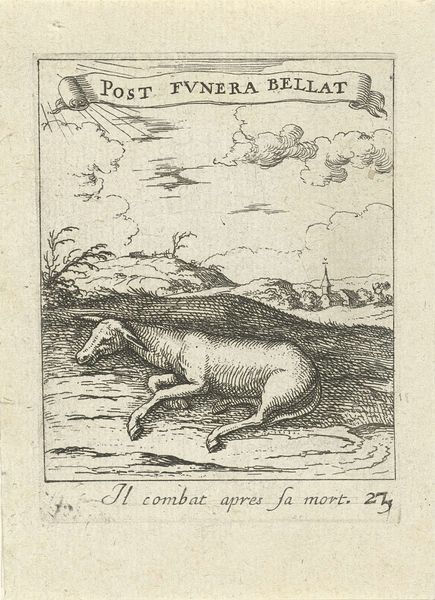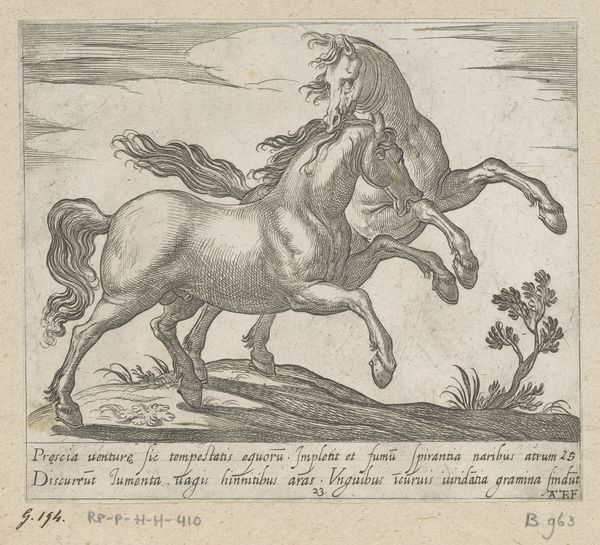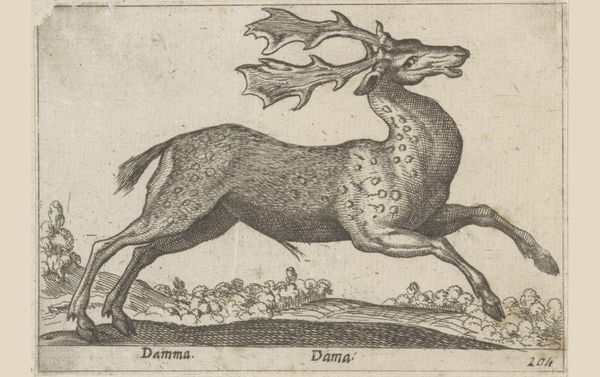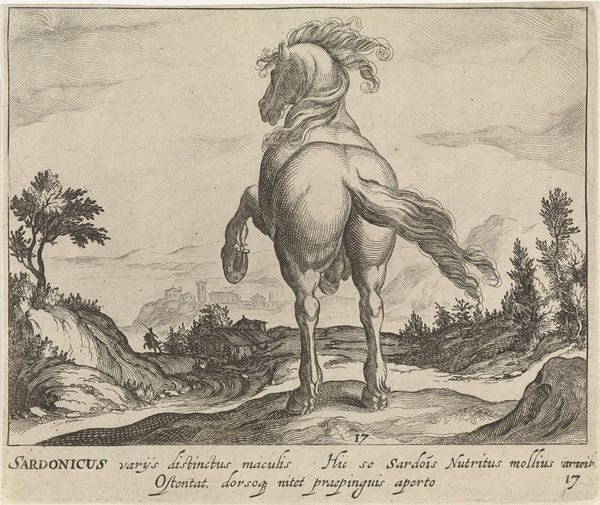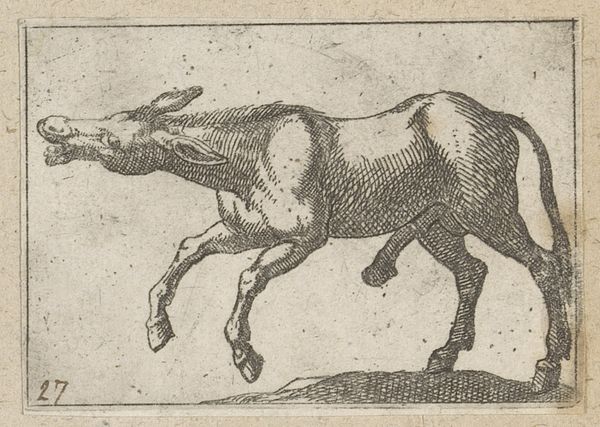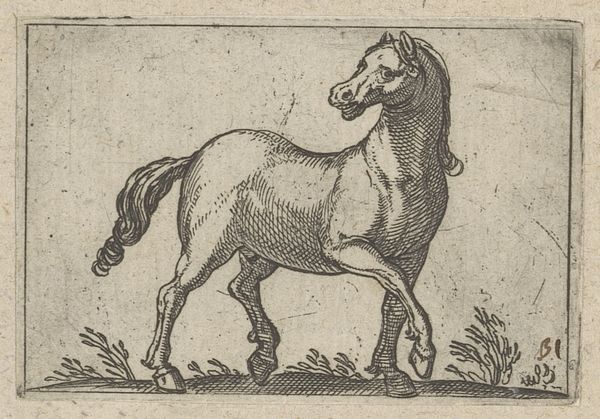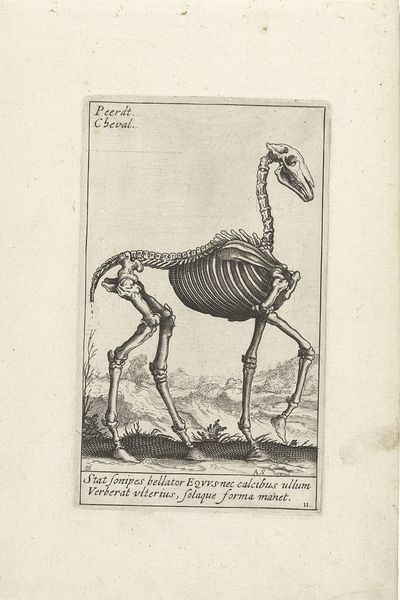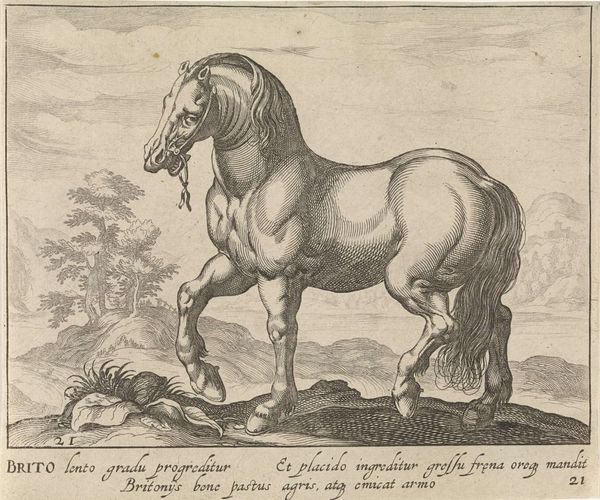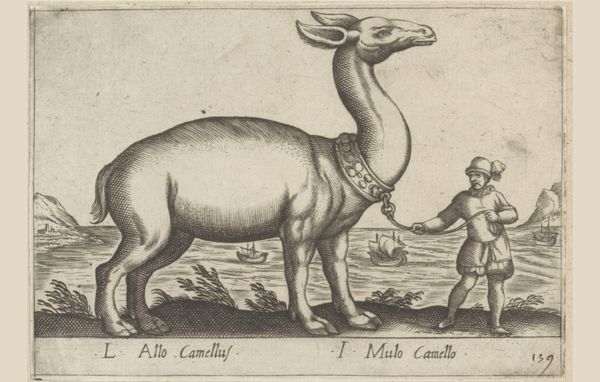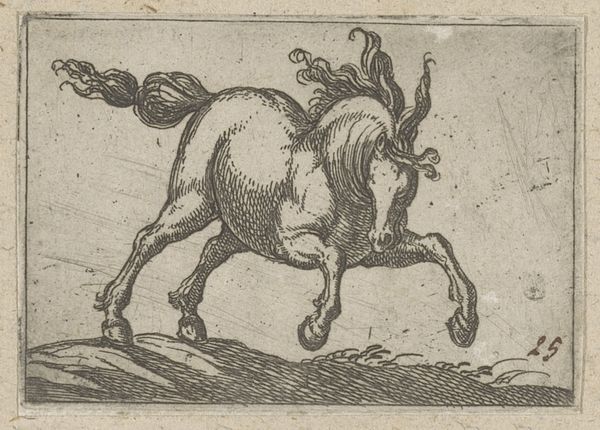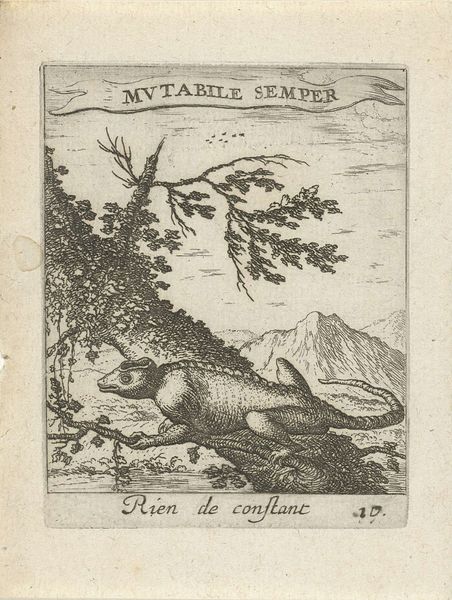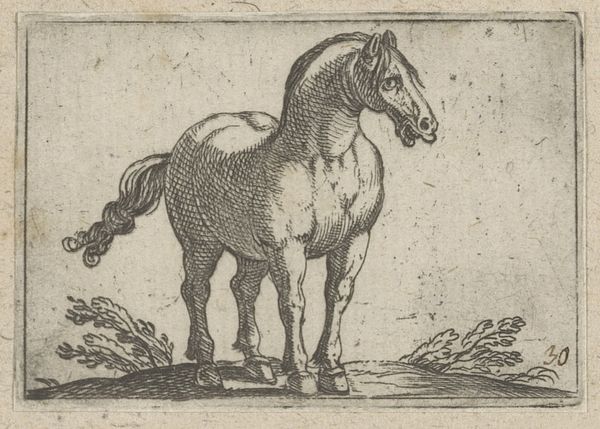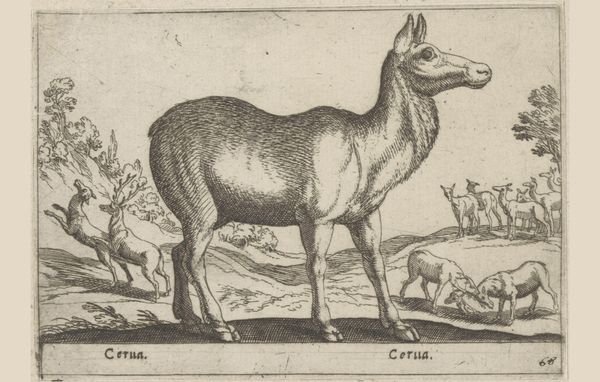
etching
#
baroque
#
etching
#
landscape
#
realism
Dimensions: height 86 mm, width 67 mm
Copyright: Rijks Museum: Open Domain
Curator: Isn’t that little deer magnificent? It’s Albert Flamen's "Springend Hert", from 1672, a wonderful etching. Editor: It feels strangely optimistic, despite the fairly somber baroque landscape surrounding it. A feeling of exuberance, I'd say. Look how the light catches its back, poised in mid-leap. Curator: Precisely! Flamen's mastery with the etching needle is astonishing. Notice the lines? Short, swift strokes to convey movement, then delicate cross-hatching to give depth and shadow. It really exemplifies Realism. Editor: Yes, I do appreciate the realistic attempt to convey the subject, but even that doesn't manage to completely obscure the baroque qualities. Also, what is he leaping over anyway? Some very oddly placed fallen twigs? There's an element of constructedness there. Is it some form of symbolic barrier, an allusion to hurdles in life, perhaps? Curator: Hmmm…I think it simply comes down to composition. A practical solution in pictorial structure. That allows Flamen to direct the gaze to the movement and poise. Editor: Still, the positioning feels intentional, doesn't it? Especially with the mottos in Latin and French at the top and the bottom; "Felix cui contigit idem," "Happy is he who can do as much," and "Heureux qui en peut autant faire." Makes you wonder who is envious of that little buck! It could almost be ironic… Curator: Irony in a baroque landscape, you think? More likely a straightforward admiration of vigour and vitality. Like a "get up and go" attitude in four legs and hooves! Editor: Or maybe it's just a beautifully captured, fleeting moment, forever imprinted on paper. I like the idea of Flamen encouraging the viewer to emulate the spirit of that leaping deer, to embrace freedom and dynamism. Curator: Yes, a spirit of boundless vitality rendered in ink—a snapshot from centuries past to galvanise our present. Beautifully put!
Comments
No comments
Be the first to comment and join the conversation on the ultimate creative platform.
